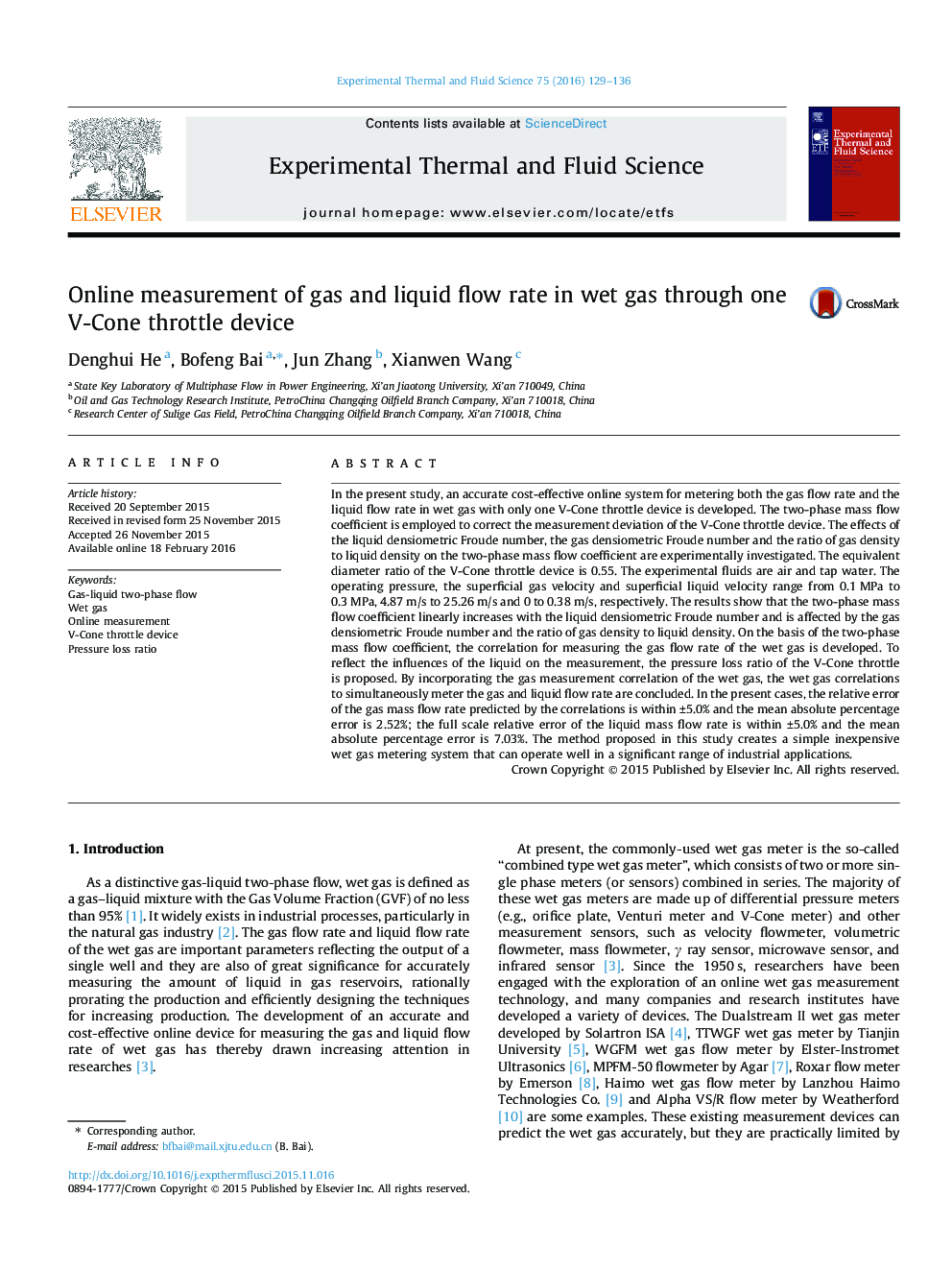| Article ID | Journal | Published Year | Pages | File Type |
|---|---|---|---|---|
| 651139 | Experimental Thermal and Fluid Science | 2016 | 8 Pages |
•Measure gas flow rate and liquid flow rate simultaneously with one V-Cone throttle device.•Use two-phase mass flow coefficient to measure gas flow rate.•Propose a parameter, pressure loss ratio, to measure liquid flow rate.
In the present study, an accurate cost-effective online system for metering both the gas flow rate and the liquid flow rate in wet gas with only one V-Cone throttle device is developed. The two-phase mass flow coefficient is employed to correct the measurement deviation of the V-Cone throttle device. The effects of the liquid densiometric Froude number, the gas densiometric Froude number and the ratio of gas density to liquid density on the two-phase mass flow coefficient are experimentally investigated. The equivalent diameter ratio of the V-Cone throttle device is 0.55. The experimental fluids are air and tap water. The operating pressure, the superficial gas velocity and superficial liquid velocity range from 0.1 MPa to 0.3 MPa, 4.87 m/s to 25.26 m/s and 0 to 0.38 m/s, respectively. The results show that the two-phase mass flow coefficient linearly increases with the liquid densiometric Froude number and is affected by the gas densiometric Froude number and the ratio of gas density to liquid density. On the basis of the two-phase mass flow coefficient, the correlation for measuring the gas flow rate of the wet gas is developed. To reflect the influences of the liquid on the measurement, the pressure loss ratio of the V-Cone throttle is proposed. By incorporating the gas measurement correlation of the wet gas, the wet gas correlations to simultaneously meter the gas and liquid flow rate are concluded. In the present cases, the relative error of the gas mass flow rate predicted by the correlations is within ±5.0% and the mean absolute percentage error is 2.52%; the full scale relative error of the liquid mass flow rate is within ±5.0% and the mean absolute percentage error is 7.03%. The method proposed in this study creates a simple inexpensive wet gas metering system that can operate well in a significant range of industrial applications.
